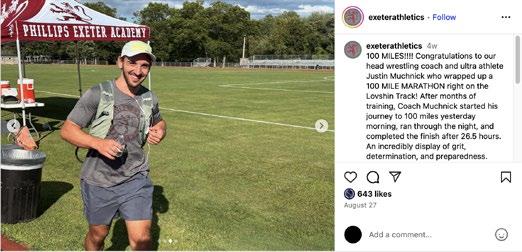

NEPSAC ® News
NEW ENGLAND PREPARATORY SCHOOL ATHLETIC COUNCIL
New England Preparatory School Athletic Council
2025–2026
President
Ryan Frost Cardigan Mountain School
Vice-President
Tim Joncas Westminster School
Secretary
Lisa Joel Phillips Andover Academy
Treasurer
Jamie Arsenault New Hampton School
Co-Directors of Championships
Geoff Barlow Avon Old Farms School
Bob Howe Deerfield Academy
Jason Baseden Phillips Academy Exeter
Director of Classifications
Sean Kelly The Wheeler School
Coordinator of Diversity, Equity and Inclusion
Lamar Reddicks Milton Academy
Coordinator of Membership
Courtney Callanan Rectory School
Coordinator of Sport-Specific Rules and Regulations
Jenna Simon Holderness School
Coordinator of Compliance
(Grievances, NIL Included)
George Tahan Belmont Hill School
Coordinator of All-NEPSAC
Andrew Mitchell Lexington Christian Academy
Past Presidents
George Tahan Belmont Hill School
Bob Howe Deerfield Academy
Jamie Arsenault New Hampton School
Middle School Representatives
Rob Feingold The Fay School
Courtney Callanan Rectory School
District I Representatives
Stefan Jensen Hyde School
Becky Kimball Kents Hill School
District II Representatives
Jenna Simon Holderness School
Connor Wells Brewster Academy
District III Representatives
Sean Kelly The Wheeler School
Andrew Mitchell Lexington Christian Academy
Caroline Langhurst Montrose School
District IV Representatives
Geoff Barlow Avon Old Farms School
Andy Dunn Taft School
Courtney Callanan Rectory School
Josh Balabuch Kingswood Oxford School
Communications Specialist
Laurie Sachs The Rivers School
“NEPSAC” and the NEPSAC logo are registered trademarks of the New England Preparatory School Athletic Council and may not be used or displayed without permission.
New England Preparatory School Athletic Council qualifies as a public charity under Internal Revenue Code 501(c)(3).
15 NEPSAC Heads of School: What They Learned as NEPSAC Athletes
11 Sara Stone Navigates to TP52 World Championship
Navigating Concussion Management
21 NMH Lacrosse Coaches Participate Heritage Cup
Kents Hill Invests in Snow, Science and Sustainability
Trio Guides the Next Generation on the Ice
Stanmar Case Study: Phillips Academy Andover
29 Khelsi Petigny Creates a Home Through Basketball
39 Long-Jumping for Longevity: Masters Track Champ
41Jim Kelley on the Impact of Mentors and Mentorship

Brooks School Goes to London

36 One Trainer’s Journey into the World of Alpine Racing 23 New Turf for Brewster Academy 48 Learning to Fail
4 Around NEPSAC 7 Laurels 50 #ICYMI
ON THE COVER: Brewster Academy’s new turf field on Winnepesaukee.

HPresident’s Letter
Ryan Frost Cardigan Mountain School
appy Fall! I hope this note and the NEPSAC News find your school year off to a strong start, even amidst the hectic nature of September. Several years ago, I asked some of the veteran NEPSAC Board ADs if the start of the year ever felt easier. Without exception, each one said the same: no matter how much work you do in the summer, the fall is always busy. So rest assured—you are not alone!
As always, I hope you’re able to carve out time to enjoy this edition of the NEPSAC Magazine. Laurie Sachs has once again done an outstanding job highlighting stories and people from across our league. If you have stories to share, please send them along—we’d love to hear about the amazing work happening in your schools and communities.
The Board has already held its first meeting of the year, with another just around the corner. One important discussion underway is the proposed update to the out-of-season coaching policy. We encourage schools to continue conversations at your fall district meetings so that we can move toward a vote at the annual meeting.
Reminders for the Fall
» NEPSAC Directory: Please review and update your school’s information to ensure everyone stays connected and informed.
» Dues: Don’t forget to pay your NEPSAC, District, and Coaches Association dues.
» Handbook & Attestation: Review the NEPSAC Handbook and sign the Attestation Form. This step is crucial, as we continue to see situations where schools—or new coaches— were unaware of existing NEPSAC policies or rules. Please ensure your community understands and follows them. If you need clarification, don’t hesitate to reach out. If you feel a school is in violation of a rule or policy, please first connect AD-to-AD to clarify. If that does not resolve the matter, contact your district leadership for support, and finally submit a grievance through the NEPSAC site if further action is needed.
Annual Meeting
This year’s NEPSAC Annual Meeting will take place on November 21, 2025, at Phillips Academy Andover. Stay tuned for more details this fall. The structure and timeline will look slightly different this year, designed to respect our busy schedules while also creating meaningful opportunities for professional development and networking.
This will be my final introduction as NEPSAC President. At the annual meeting in November, I will proudly turn over leadership
TREASURER’S REPORT
by Jamie Arsenault, New Hampton School
As I begin my 29th year at New Hampton School and my 19th year on the NEPSAC Executive Board, I am honored to assume the role of NEPSAC Treasurer. I look forward to supporting our schools and athletic directors as we continue to strengthen the association in the 2025–26 school year.
A key priority this year is streamlining our financial processes. All dues and tournament fees are now processed exclusively through our online payment portal, ensuring greater efficiency and accountability. In addition, we will continue to build and expand relationships with our vendors, with the goal of establishing corporate partnerships that will further benefit our member schools.
Professional development remains another important focus. We are actively seeking new ideas and presentations that will enhance the work of our athletic directors. I encourage you to share your suggestions as we strive to provide valuable learning opportunities for all.
As Treasurer, I am committed to ensuring transparency, accountability, and responsible stewardship of NEPSAC’s financial resources. Thank you for your continued support of NEPSAC. Together, we can build on our strong traditions while creating new opportunities for growth and collaboration.
to my good friend, Tim Joncas. My time as president has been what we at Cardigan like to call “Full and Rich”—certainly busy, but deeply rewarding both personally and professionally.
I encourage all of you to find ways to become more active in NEPSAC, whether by joining district leadership, serving on a committee, or contributing within a coaches association. Our organization thrives because of the time and talents of its members, and I assure you that your service will bring both professional growth and meaningful camaraderie.
All the best,
Ryan Frost
Got news to share with other NEPSAC schools?
Send the details to communications@ nepsac.org and we’ll put it in the next issue.
NEPSAC 2025–2026
UPCOMING MEETINGS
EXECUTIVE
BOARD
Tuesday, October 7
Remote 8:15
Thursday, November 20
Phillips Academy Andover 4:00
Friday, November 21
Annual Meeting, Phillips Academy Andover
Tuesday, January 6
Remote 8:15
Tuesday, February 10
Remote 8:15
Tuesday, April 28
Cushing Academy 9:00
MIDDLE SCHOOLS
Thursday, April 2
Fay School 10:00
DISTRICT I
Monday, November 11
Gould Academy 10:00
Monday, February 24
Hyde School 10:00
Monday, May 19
Kents Hill School 10:00
Zoom meetings may be held if needed in October, January and April
DISTRICT II
Thursday, October 16
Holderness School 9:00
Thursday, February 12
Tilton School 9:00
Thursday, April 30
New Hampton School 9:00 Bi-weekly meetings on Zoom from August 2025 to May 2026.
DISTRICT III
Tuesday, April 14 10:00
Phillips Academy Andover
DISTRICT IV
Thursday, April 24
Westminster School 9:00
SPORTS MEDICINE ADVISORY COMMITTEE REPORT
by Grady Congleton, SMAC chair
Welcome back! I hope your summer was as restful as mine was, chasing a 5-year-old and 2-year-old around the beach!
As we begin the new school year, I’m excited to continue to partner with the Executive Board to ensure that we continue to promote health and wellness among all NEPSAC member institutions, athletic directors, coaches, officials, and athletic trainers.
We have an exciting year ahead as we prepare to look to continue to strengthen our position as one of the premier interscholastic athletic leagues while prioritizing the health and wellbeing of all in NEPSAC sports.
I am not alone in this effort. The committee is made up of nine athletic trainers and two medical advisors, John Bassi, MD of St. Paul’s School and Amy Patel, MD of Phillips Andover Academy. We’re also excited to welcome back Sean Kelly as our Executive Board liaison.
On the agenda for this coming year, we will continue to strengthen our policies around football health and safety, including promoting safe contact and
appropriate medical care during football games.
Likewise, neck guards, mouthguards, J-hooks, and ear protectors remain mandated for all NEPSAC ice hockey players despite the fact we play by NCAA rules, who do not mandate these protective equipment.
In addition, we are working to partner with the ice hockey referees and coaches associations across New England to raise awareness on the importance of enforcing these rules.
Moving forward, the nine athletic trainers on SMAC, will continue to gather feedback and work hard to support the goals and ambitions of thousands of athletes, coaches, and parents while ensuring a common sense approach to health and safety in athletics.
As always, if you have any questions or concerns, please email me at smacchair@ nepsac.org, and I will be more than happy to help you.
On behalf of the entire committee and the league, I’m looking forward to a great and productive year together!
Annual Meeting
Friday, November 21, 2025
Seen in the Wild: NEPSAC Championship Official patches
Last fall NEPSAC announced a new initiative to recognize and show appreciation for our tournament officials. This patch symbolizes our deep gratitude and acknowledges the high professionalism and dedication these officials bring to every game. By wearing this patch, officials will be recognized as key contributors to the integrity and excellence of NEPSAC championships. Below are Gregory Leeds, BJ Guerin and Keith Urkiel, who sported the new patches as they officiated the Gann Academy/Storm King School soccer playoff match at the MacDuffie School.
BELMONT HILL SCHOOL | BELMONT, MASSACHUSETTS
Sampson Onuoha ’25 Honored by National Football Foundation
by Cameron Chittock | photo by Adam Richins
After finishing a stellar career on and off the field at Belmont Hill, Sampson Onuoha ‘25 was selected for the 2025 National Football Team of Distinction as part of the NFF’s mission “to promote the scholar-athlete ideal.” Onuoha was one of only 82 students in the entire country recognized for this incredible honor.
During his time at Belmont Hill, Sampson achieved a 4.04 GPA, and was recognized with National Honors Society honors. He was also a
Boston Herald All Scholastic, and two-time All ISL and All NEPSAC selection.
“Sampson is truly a special person who has left a lasting impression on the Belmont Hill community,” said Varsity Football Coach Anthon Fucillo. “He left his home in England to chase his dream, and because of his character and work ethic, he is now living that dream at Duke University. He set a great example for his peers each day as a three-sport impact player who
holds over a 4.0 GPA, something that is rare to come by these days. Belmont Hill has prepared him well for the academic and athletic rigor he will experience at Duke. I am confident he will do a great job there.”
The entire Belmont Hill community celebrates this well-earned honor for Sampson and looks forward to following where his academic and athletic excellence takes him.
USA Lacrosse Honors NEPSAC Coaches and Players
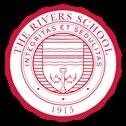
Two NEPSAC coaches and five players were recently honored by US Lacrosse, the governing body of lacrosse in the United States. The awards honor coaches and players who embody passion, fair play and academic excellence. Each year, USA Lacrosse honors boys and girls coaches of the year and players via the Bob Scott Award for boys and the Jackie Pitt Award for girls.
Congratulations to coaches Matt Hudson of The Rivers School and Joseph Bernier of St. Paul’s School. Girls receiving the Jackie Pitt Award are midfielders Lauren Herlihy ’25 of Phillips Academy Andover and Alexandra Cabot ’25 of
St. Paul’s. Kaia Swamp ’25, attack, of Northfield Mount Hermon was also honored. The Bob Scott Award went to attacker Charles Cochran ’25 of Governor’s Academy and defender Douglas Falk ’25 of St. Paul’s.
Visit the links below for more about each award and a complete list of winners.
High School Boys Coaches of the Year
Jackie Pitts Award Winners and more about Jackie Pitts
Bob Scott Award Winners
Got news to share with other NEPSAC schools?
Send the details to communications@nepsac.org and we’ll put it in the next issue.
CHOATE ROSEMARY HALL | WALLINGFORD, CONNECTICUT
Head Boys Varsity Basketball Coach Chosen for Irish National Team
This summer, Drew Dawson, Choate Rosemary Hall’s head varsity boys basketball coach was selected for the coaching staff of the Ireland National U-20 Men’s Basketball team.
Dawson, the reigning Founders League Coach of the Year, served as an assistant coach during the Irish National team’s FIBA Youth EuroBasket Championships while also working at the Basketball Ireland National Camp.
Ireland began its tournament run on July 12 against Estonia followed by games against Armenia, Latvia, and Montenegro.
The full story on Coach Dawson’s coaching assignment is available on the Basketball Ireland website
Best of luck and congratulations to Coach Dawson!
GIRLS TRACK AND FIELD
JANNAH MAGUIRE ’25
Phillips Exeter Academy
Exeter, New Hampshire
ATHLETIC EXCELLENCE

The 5-foot-9 senior hurdler and sprinter earned All-American status in the 400-meter hurdles at Nike Outdoor Nationals this past season, and her third-place finish in 59.34 seconds ranked No. 14 nationally among prep girls competitors this spring. The clocking was the fastest in state history by a high school-age girl. Maguire set meet records at the New England Prep School Track Association Division I Championships in both the 100- and 300-meter hurdles and shared in a third as anchor of the 4x400-meter relay quartet. Maguire’s win in the 300 hurdles was also the fastest clocking in state history by a high schoolage girl (42.59), which ranked No. 82 nationally. She broke the tape in the 100 hurdles in 14.32 at NEPSTA as well and ran the second leg for the winning 4x100 relay squad..
ACADEMIC ACHIEVEMENT
Maguire has maintained an A average in the classroom. She will attend Brown University, where she will compete in track and field, beginning this fall.
EXEMPLARY CHARACTER
The co-founder of Phillips Exeter’s Environmental Science Student Organization, Maguire is a dorm proctor at her school. A member of the Black Students of Excellence as well as the Muslim Students Association, she has volunteered locally as a library service attendant.
Jannah was indomitable this spring. Her competition is in awe of her. Not just for the times she posts or the way she seems to just never slow down, but for the sportsmanship and humility she demonstrates on and off the track.” ~ Keri Lambert, Head Coach, Phillips Andover Academy



Official Championship Ring Supplier
Supplier of
Trophies for over
years
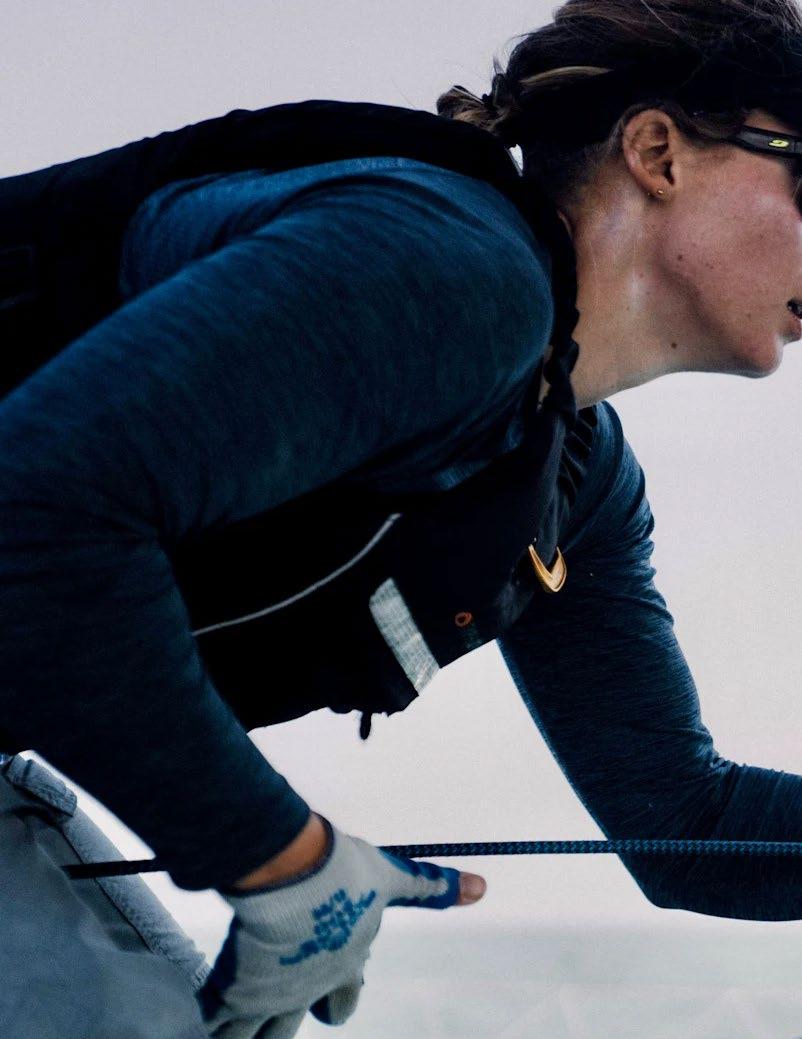
Sara Stone ’09 is First Female Navigator to win TP52 World Championship
by Caitlin Barbour, Tabor Academy
In a significant milestone for competitive sailing, Sara Stone ’09 has claimed the title of first female navigator to win the TP52 World Championship.
Established in 2012, the 52 Super Series is considered the “Formula 1” of sailing. It’s the world’s leading grand prix monohull yacht racing circuit, consisting of five regattas per season throughout Europe. Competitors take on windward-leeward courses on a simple first across the finish line format in real-time racing. The 2025 World Championship took place in Cascais, Portugal in July, where Stone sailed with the American Magic Quantum Racing team.
TABOR ACADEMY | MARION, MASSACHUSETTS
As navigator, Stone describes her role as “everything electronic.”
Responsible for managing the multitude of systems and sensors aboard, her job requires ensuring systems are functioning correctly, collecting and interpreting data, and verbally delivering information clearly and concisely while on the race course.
“I’ve got an iPad with access to everything. I need to be able to look at the data in real time, assess if the data reflects reality and pull out what information is critical for the right people at the right time. For instance, if the numbers say the wind direction is one thing, I need to decide if I believe the numbers or if I need to adjust the wind direction to better match what I see on the water. The computer is only capable of projection, so I’ve also got to add in reality, like wave state, to the computer calculations. And it must be consistent so that the team knows where to look and what they’re looking at,” she says.
Stone rowed competitively at both Tabor and Dartmouth College, but did not have a background in competitive sailing. After graduation, Stone went to work for the Centers for Disease Control and Prevention (CDC). In 2015, she received honors for outstanding support and leadership in the CDC’s response to the Ebola epidemic in West Africa.
Inspired by the all-female Team SCA in the 2014-2015 Volvo Ocean Race, Stone began to consider sailing professionally. While completing her Master of Science degree from The London School of Hygiene and Tropical Medicine she spent as much time on the water as possible, gaining experience and building her network.
“I am a very methodical and analytical person. I treated this move [from epidemiology to sailing] as a project management exercise, and I was the project. I assessed my value-add and the experience I already had and took stock of the gaps I needed to fill,” she notes, reflecting on the process of making such a significant career shift.
In 2018, she made the transition official and slowly began to get opportunities to race with different teams, saying yes to everything. Then, the 2022 Newport-Bermuda doublehanded return race was the first major project that she managed herself and went on to win, leading to her being named a 2022 US Rolex Yachtswoman of the Year Finalist.
Her groundbreaking journey has been bolstered by her tenacity and ability to turn rejection into learning opportunities. “Every time I was told ‘no,’ I didn’t take it personally. I used it as a method of figuring out what I was missing. Then I’d go get that experience or that certification so that it couldn’t be a reason anymore.”
Today Stone is a full-time professional sailor with goals of racing around the world and competing in The America’s Cup. While some professionals choose to specialize in a certain role, Stone considers herself a “can-do-anything sailor.” She currently competes as the navigator on board the TP52 Super Series Quantum Racing team, offside trimmer on the RC44 Team Aqua, and bow/pit on the Upwind by MerConcept OceanFifty Trimaran Racing Team. Last year, Stone was the Team Skipper and port side trimmer for the New York Yacht Club American Magic PUIG Women’s America’s Cup team, and she was previously a member of the US Sailing Team in the Nacra17 and the US Sail Grand Prix Team.
Despite claiming the World Championship title, Stone’s year on the water with American Magic Quantum Racing isn’t finished yet. In August she heads to Puerto Portals, Spain followed by Porto Cervo, Italy in September. While she’s making waves all over the world, her fellow Seawolves will be cheering her on from our own waterfront here at Tabor.
Photos courtesy of Sara Stone.
HOLDERNESS SCHOOL | PLYMOUTH, NEW HAMPSHIRE
From the Athletic Training Room: Navigating Concussion Management at Holderness
by Nicholas Laurence, M.Ed, L.ATC | Photo by Max Paro
Along with rest, relaxation, and recreation, summer is a time for professional development and policy review. As this summer kicked off, I attended the Twin State Athletic Training conference to learn alongside colleagues from New Hampshire, Vermont, and beyond.
Although a power point in a conference hall is not my first choice on how I would spend a sunny early summer day, I was happy to find affirming parallels for Holderness’s concussion management policy while watching Dr. Mark Peluso, the team physician for Middlebury College, discuss Middlebury’s concussion management.
The Concussion Management Shift: From Playing Through to Pushing Pause
Concussion management has evolved quite a bit since I entered the athletic training profession. During my undergraduate studies, concussion management was at an inflexion point. The days of
playing through concussions had come to an end thanks to a slew of research and discoveries around brain injury. During a clinical rotation with Dartmouth’s football program in the fall of my senior year, I saw some of this new research taking place firsthand.
Before practices and games, I would help place accelerometers inside helmets, which allowed us to get real-time feedback on the linear accelerative force that collegiate football players were experiencing—all from the sideline. In order to gather more data, the study’s researchers redesigned the accelerometers to also capture rotational acceleration, eventually publishing the first study linking rotational acceleration and concussion.
By the time of my graduation, there was a big push to make the public aware that one did not have to lose consciousness or be hit directly on the head to get a concussion, while clarifying the dangers of continuing to play sports with a concussion. Concussions were very much in the public consciousness, and a swing toward very conservative treatment was in part due to the zeitgeist.
Research over the past decade has allowed us to move away from sitting in a quiet room for days on end, toward a symptom-based approach of cognitive stimulation.
RESEARCH OVER THE PAST DECADE
HAS ALLOWED
US
TO MOVE AWAY FROM SITTING IN A QUIET ROOM FOR DAYS ON END, TOWARD A SYMPTOM-BASED APPROACH OF COGNITIVE STIMULATION.
These shifts are exciting because they mean research is being poured into concussion and brain injury; however, they also mean we need to stay on top of where the research is taking the field. The major guiding document we use to inform concussion management policy is the International Consensus Statement On Concussion In Sport, now in its 6th iteration as of 2023.
A Collaborative Approach to Healing: Return-to-Learn and Return-to-Play
When this publication was released, I sat down with Jordan Graham, Holderness School’s Academic Dean, to collaborate in supporting Holderness students in a return-to-learn protocol in tandem with a return-to-sport protocol. Together, we worked on support structures that allow students with concussions to engage in academics as tolerated, but also back off when symptoms become strong.
We also continue to find unique new ways to allow students to bypass symptom triggers; one example, for students who have concussion symptoms with reading, is the use of AI tools to turn text into narrative audio.
Perhaps the greatest change we have made is delaying major weighted assignments and assessments until the student’s concussion has healed.
We know that a student’s cognition is significantly impaired, especially in the initial stage of concussion. It would be unfair

to ask the student to complete something of graded consequence while impaired, and we do not want to pressure students to push through symptoms when they should not be.
Calling or emailing a parent to inform them their child has a concussion is not the happiest part of being an athletic trainer; parents often are worried about the academic management process, and I can tell them that Holderness teachers have a lot of experience working with students healing from a concussion. Both the willingness to support each student and the teachers’ understanding and flexibility are vital sources of feedback to the school’s athletic trainers regarding how students are doing in their recovery process.
Healing the Brain “Within Limits”
If a Holderness student gets a concussion, we take a “work within limits” approach to academics. An increase in concussion symptoms, commonly headache or dizziness, is the brain saying, “I’m working too hard right now.” It’s a signal to back off. If the student is in the classroom, they can excuse themself to the health center to rest and reset. If they are doing homework, they should take a break to reset. Students check in with the athletic trainers each day, and we can help identify symptom triggers and work with teachers to find workarounds or create temporary academic accommodations. We also track progress to ensure we are seeing a trending decrease in symptom severity and instances.
Progressing through physical activity takes a similar approach of “within limits” and with guidance. During the initial stages of concussion, just walking around campus might increase symptoms. Once symptoms are under control in activities of daily life, the athletic trainers can start to prescribe and increase very controlled and supervised rehabilitative cardiovascular exercise, like time on the spin bike. In this stage, we often find a heart rate threshold associated with the onset of symptoms, and we can work below that limit.
Once the patient has been symptom-free for at least 24 hours, we administer neurocognitive testing and physical testing in an effort to ensure the patient has reached an appropriate level of healing to consider returning to sports; if so, we create a plan with the student, parent, and coaches to create an appropriate progression back into athletics.
Our “working within limits” approach is recommended by the International Consensus Statement On Concussion In Sport, and research points to it helping the healing process. One of the challenges is encouraging our motivated student-athletes not to push their brain or body to a point that detracts from the healing process.
Nick Laurence serves as Holderness’ Head Athletic Trainer. Nick holds an M.Ed. in Health Promotion from Plymouth State University and a B.S. in Athletic Training from Colby-Sawyer College. Nick loves the outdoors, and you can often find him biking, running, or nordic skiing on the school’s trails.
NEPSAC Heads of School: What They Learned as NEPSAC Athletes
by Jim Kelley
The cadence of a day on the campus of an independent school is wholly unique. For 12 hours students and faculty alike share meals, classes, hallways, and playing fields all in pursuit of a specific experience that shapes a worldview rooted in teamwork, service, and community. No classroom teaches these values and so many more quite like the athletic program, and it is where many school leaders found their voice, their purpose, and their drive to lead.
“Playing on interscholastic teams all three seasons, I think, was a huge benefit in my development as an athlete,” recalls Joe Williams, current Head of School at New Hampton and Lawrence Academy Athletic Hall of Famer.
“You develop different strengths in different sports, but they definitely cross over. The team dynamics of sports are equally important for the team dynamics of running a school.”
Williams was a standout threesport athlete and faculty child at Lawrence and felt the pull to compete at a young age playing with his brothers. The desire to return to boarding schools after a decorated basketball career at Bowdoin College
Ilove to be on the sidelines for games so I can reminisce about a hard fought battle with one of our student athletes, it’s all part of the job ~ Joe Williams, New Hampton School
came not from the classroom, but from the opportunity to work with young people as they rounded into the people they wanted to become.
“I think that’s the place where I’ve made deep connections with students thinking about their actions, the goals that they have, how they go about achieving those, the legacies they want to leave behind. I love to be on the sidelines for games so I can reminisce about a hard fought battle with one of our student athletes, it’s all part of the job.”
Just as coaches work with student athletes, school leaders work with faculty and staff towards strategic goals. Heads will often find themselves working on ways to maximize individual strengths to lift the school as a whole, often asking faculty to do something schools ask of students on a near-daily basis: Step out of their comfort zone.
“When you consider how many of our students are walking into some athletic experiences with that notion of ‘I don’t know if I can do this’ or ‘I don’t feel confident’, it has to be okay for us as faculty to have some similar feelings,” Tilton School Head of School and Kent School alumnus Derek Krein remarks.
Krein, who played hockey and captained the rowing team before continuing to row at Connecticut
Joe Williams, New Hampton School
Joe Williams in his Lawrence Academy playing days.
Derek Krein played hockey and rowed at Kent School.
School Dean of Afternoon and Athletic Programs Colleen
and Derek Krein.
When students know you are rooting for them and that you believe in them, very often they do things that even they can’t believe ~ Derek Krein, Tilton School
College, recalls, “In my first two jobs I was asked to coach sports I had never played myself. So instead of technical expertise, I had to focus on how I keep this ‘crew’ working together. Do these students feel known and needed? Because when students know you are rooting for them and that you believe in them, very often they do things that even they can’t believe things they may not have done otherwise. Faculty, too. I know I learned this from the legendary Kent crew coach, Hart Perry.”
Amy Bonnefond Smucker, incoming Head of School at Proctor Academy, echoed that sentiment while remembering one of her coaches from Loomis Chaffee School.
“Athletics were where I felt most confident and at home, and my coaches became an incredible source of support and guidance for me,” Smucker, who went on to play hockey at Colby College, recalls. “My hockey coach was so intentional about recognizing what everyone contributed and that really opened my eyes to how impactful an educator can be through athletics.”
Amy Smucker (second from left) and her hockey teammates.
My hockey coach was so intentional about recognizing what everyone contributed and that really opened my eyes to how impactful an educator can be through athletics ~ Amy Bonnefond Smucker, Proctor Academy
every athlete’s contribution no matter how big or small it might have been. This gesture fostered teamwork, collaboration, and a culture of celebrating everyone’s successes.
and
“Athletics requires everyone to bring their best effort and work together, but it also challenges us by teaching us how to fail, how to pick ourselves up, and how to rely on others to help us do that,” Smucker said. “I operate as a leader at school the same way I did as an athlete, by recognizing everything is so much bigger than one person.”
Greg Schneider, Head of School at Belmont Hill School and an alumnus of Noble & Greenough School, recalled a similar story from his time on campus in Dedham with faculty member Bill Kehlenbeck.
That coach, Chuck Vernon, was a longtime teacher-coach at both Loomis Chaffee and Williston Northampton. Vernon would send a letter to the team after every game highlighting
Amy Bonnefond Smucker, Proctor Academy
“He was my advisor, my calculus teacher, he was in my band, ran my a cappella group, and he was my varsity baseball coach,” Schneider recalls. “He had a huge impact on me and so many others in all the ways he was present at school. He represented that renaissance ideal that so many of our schools espouse.”
Schneider, who went on to be a football player at Amherst College,
Greg Schneider, Belmont Hill School
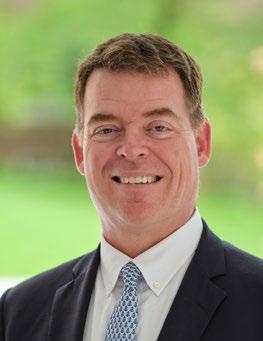
Tilton
Coyne, Ken Hollingsworth
Amy Smucker
her husband, Jim, former NEPSAC treasurer.
The whole notion of team sports requires everyone to have a role to play in something bigger than themselves ~ Greg Schneider, Belmont Hill School
specifically points to the role of athletics in Belmont Hill’s mission to develop young men of character and the research that supports the playing fields as a place where those lessons are learned and ingrained most effectively.
“The whole notion of team sports requires everyone to have a role to play in something bigger than themselves. We find that these lessons are essential not just athletically, but also when they go into the workforce and every other facet of their lives.”
Recruiting, supporting, and developing faculty who focus on these same tenets requires a similar skillset to that of a team captain, something Fay School Head of School and former Concord Academy and Park School student-athlete Susanna Whitaker Waters has always leaned on.
“Everyone comes into every season at their own stage in their personal growth journey,” Waters recalls of her time as a two-year captain of the lacrosse team at St. Lawrence University. “I remember being a younger athlete on the team and looking up to my older teammates, so when the role reversed I always tried to be supportive of the girls coming up behind me. I have incorporated that into how I lead at school: I am grateful to my mentors who looked out for me and provided guidance and try to make myself available in that regard to earlycareer educators coming up behind me.”
To me, leadership is a team sport. So I try to have it be collaborative, an ensemble ~ Susanna Whitaker Waters, Fay School
her time at Concord Academy and Park School.
For Waters this past year, her first at the helm in Southborough, solidified so many of the beliefs she has held tightly about leadership and the power of the whole.
“To me, leadership is a team sport. So I try to have it be collaborative, an ensemble. One of my favorite expressions is that the smartest person in the room is the room. Everyone’s perspectives brought together create the most effective strategy.”
Piecing together the mosaic of perspectives that make up an independent school faculty takes immense care and has only gotten more challenging as the market calls for coaches and teachers to be subject matter experts. As leaders of these communities, heads are called upon to align their faculty recruiting strategies to the school’s strategic goals and mission statements.
Walker Buck, Western Reserve Academy
Suzanne
Susanna Whitaker Waters, Fay School
Greg Schneider at bat for Noble & Greenough School.
Susanna Whitaker Waters went on to play lacrosse at St. Lawrence University after
“If you want to be a top 10 school in the country for a particular sport, you’re going to need coaches who can coach at that level,” said Suzanne Walker Buck, Head of School at Western Reserve Academy and alumna of Miss Porter’s School and Fay School. “But is it realistic to think that those same coaches can also teach Spanish too?
We are constantly trying to calibrate what makes the most sense for us at Western Reserve and what is in the best interest of the school at a given moment in time.”
Buck, who was a two-sport athlete in field hockey and lacrosse at Connecticut College, believes that schools can be strategic in where they apply faculty resources in the same way schools are strategic about any other resource, but it is critical that all decisions align to the mission of the school.
“The most important thing for me is that we have community builders who can work effectively and compassionately with kids and safeguard students. It’s important that we recruit and retain people who facilitate the experience of learning, and that emphasis stems from my own experience having really great coaches who were also really good teachers.”
The most important thing for me is that we have community builders who can work effectively and compassionately with kids and safeguard students
~ Suzanne Walker Buck, Western Reserve Academy
Buck recalls the most impactful educators she had at Miss Porter’s were those who were not just present in the classroom, but in the hallways, the dining hall, at musical performances and theater productions. These types of educators see all sides of every student, a sentiment shared and echoed by school leaders everywhere.
“Ihave been lucky to be in environments like Holderness School, Brooks School and now Fay that understand that different kids will show up in myriad ways based on the setting,” Waters said. “There are students who will dominate on the court or field, but in my History classroom things don’t come quite as easy to them and having both experiencing success and adversity that has to be overcome does so much to build a person’s character.”
With fewer and fewer multi-sport athletes every year, school leaders wrestle with how to strike the right balance between what students and families are looking for and their own robust student experiences.
“One thing I try to do is model that balance as someone who’s a writer, a pretty serious jazz musician, and a father, the thing I worry about most is when kids allow too much of their identity to become connected to their sport,” Schneider said. “The value proposition of schools like Belmont Hill is so much bigger than the athletic piece, so I try to be intentional in my messaging to remind our students that being a man of character goes beyond the field of play.”
There is an old adage that “how you do anything is how you do everything,” and for many of these school leaders, athletics
presents an opportunity for students to show the world what it means to be a NEPSAC student athlete and an ambassador for their individual schools.
“I put a lot of emphasis on our student athletes, on how they conduct themselves in competition,” Krein said. “How they treat opponents, how they treat officials, how they treat each other. I think specifically about our girls’ basketball program that won the Class AAA Championship this past year but may not have been the most individually talented team Tilton has ever fielded. But that team had some of our best students, our best admissions representatives, members and leaders of student government. With that essential foundation of good citizens - good humans - it becomes really easy to build really good teams.”
From the boardroom to the classroom to the weight room, these educators have all leaned on their own formative experiences as student athletes to lead their schools in ways that encourage collaboration, intentionality, and character.
Jim Kelley is a 2009 alumnus of Bancroft School and former faculty and staff member at The Rivers School and Brooks School. Jim is currently the director of athletic operations at Springfield College in Springfield, MA.
Suzanne Walker Buck cheers for Western Reserve.



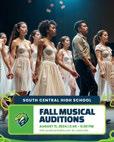





NMH Lacrosse Coaches Take Part in Heritage Cup Tournament
by Max Hunt, NMH Staff Writer
In May, NMH boys’ lacrosse coaches Trevar Haefele and Wil Chuch brought their passion for the game to the international stage at the Heritage Cup tournament in Boston.
Held during the NCAA Lacrosse Final Four weekend, the Heritage Cup brings together teams from around the world. The 2025 event at Gillette Stadium featured 112 teams from 36 countries, with players ranging from preteens to adults.
Haefele suited up for the Philippines men’s national team, while Chuch coached the Haudenosaunee Nation’s under-19 boys’ team and assisted with the under-15 squad.
“What’s cool about the Heritage Cup is, while it’s still competitive as hell, there’s a bigger focus on community,” Chuch said. “People can go and watch the NCAA men’s and women’s games as well, which is sick for the young kids and the adults.”
Haefele joined the Philippines team as one of its limited nonpassport holders, a status granted thanks to his long friendship with the head coach and captain, as well as his wife and children’s Filipino heritage.
THE MORE NATIVE KIDS YOU HAVE HERE, THE MORE NATIVE KIDS COME, AND SO ON TOP OF BEING GOOD FOR LACROSSE, IT’S HUGE FOR OUR PROGRAM TO START SPREADING THAT NET OF INTEREST. WIL CHUCH
While the Philippines team advanced to the quarterfinals, what stuck with Haefele most was the strong sense of togetherness and pride shared by the team and others at the tournament. From cheering on other squads to sharing home-cooked meals and bonding at NCAA games, he said, the experience created lasting connections.
“There certainly was a sense of competitiveness and honor in representing your national team,” Haefele said. “But the broader sense of purpose and community was special. The welcome from the team and the continued sense of connectedness to the group has been awesome.”
The U-19 Haudenosaunee squad, with Chuch at the helm, reached the championship game in its division, a milestone the program hadn’t hit in nearly a decade.
Chuch, a member of the Citizen Potawatomi Nation, said coaching for a Haudenosaunee team was a dream come true.
“We are the only all-Indigenous athletic program that is recognized by a major sports body in the world for any sport,” Chuch said. “[Lacrosse] being a Native sport to begin with, being
Trevar Haefele played for the Philippines team.
MY SON AND DAUGHTER WILL OFTEN BE A MINORITY IN [PUBLIC] SPACES. TO BE WITH A GROUP THAT THEY CAN FIND THAT CONNECTION TO MEANS A LOT.
TREVAR HAEFELE
recognized as a sovereign team within the official international lacrosse body is huge.”
He hopes to build off this experience and forge stronger connections between Native athletes and schools like NMH. Several players from his team have already expressed interest in attending boarding school.
“The more Native kids you have here, the more Native kids come, and so on top of being good for lacrosse, it’s huge for our program to start spreading that net of interest,” Chuch said. “The big struggle for me when I’m working with Native families is always that fear of losing culture, leaving the rez and losing your language. By working with them through things like the tournament, they get to know me. They’ve got a friend who’s a teacher and a dorm head, a good lacrosse coach that’s connected to them.”
Haefele also emphasized the importance of representation.“My son and daughter will often be a minority in [public] spaces,” he noted. “To be with a group that they can find that connection to means a lot.”
By playing in the tournament, Haefele hopes to set an example for his NMH players on the field and instill in them an appreciation for the lessons lacrosse can teach off of it.
“I want our guys to know the opportunities that are available and what makes the sport special beyond just playing it to win,” Haefele said. “If you put in the work, if you play the right way with incredible love and passion for the game, if you’re willing to be physically tougher and mentally resilient, there will always be a place for you to find success in the sport.”
Haefele and his family
The Haudenosaunee Nation’s boys teams.
Photos courtesy of Trevar Haefele and Wil Chuch.
New FieldTurf Field Makes Brewster Academy’s Campus Centerpiece a Draw for All Students
Brown Field’s synthetic turf upgrade highlights the commitment to performance, safety, and school community
Wolfeboro, New Hampshire, known as America’s oldest summer resort, is also home to Brewster Academy, one of the state’s top boarding schools. Located on picturesque Lake Winnipesaukee, the town is the ideal setting for young minds preparing for future success, as much as it is for those seeking a summer respite.
For Dr. Bryan Gross, Dean of Enrollment Management & Marketing, Brewster’s enviable location offers more than just a scenic campus setting. Wolfeboro’s inherent benefits are a key pillar in the school’s mission-driven approach to preparing diverse thinkers for lives of purpose.
“You think about our location, and it just offers so much that frankly other boarding schools can’t match,” says Gross. “The other thing is our proximity to downtown Wolfeboro. Our students really have a tremendous amount of agency and can walk downtown and enjoy the local shops and restaurants. It’s just an incredible opportunity for our students to spread their wings.”
Brewster, which offers grades 9-12 with a postgraduate year, encourages student development through its unique approach to education—The Brewster Model®. The model balances academic and emotional development, empowering students to do their best without having to best others. It’s also an approach perfectly designed to nurture communication and cooperation integral to athletic participation, another pillar Brewster consistently and robustly encourages.
The installation of a new FieldTurf Vertex Prime synthetic turf surface at the campus’s Brown Field, just meters away from the Lake Winnipesaukee shore, emphasizes the ongoing support and investment in Brewster’s athletic programs.
“The talented students we’re attracting from around the globe who are interested in our education, our location, and then also participating in our top-quality athletic programs is huge,” says Gross, who describes Brown Field as a campus focal point, visible from the Admissions office, Kenison Library, and the Grayson
Student Center—a hub of campus life. “We intentionally have this field positioned where our prospective students and our current families are looking at it as a centerpiece. It represents a competitive spirit and the importance of athletics.”
Brown Field, home to the Brewster Bobcats’ soccer, field hockey, and lacrosse teams, had its original FieldTurf field installed in 2012. The replacement, completed in June, was delivered within a short timeframe to accommodate an upcoming lacrosse camp.
For FieldTurf, part of Tarkett Sports, this meant removing the old field, installing the new surface, and performing the required testing. Finished ahead of schedule, the field hosted players three days after completion, ensuring no impact on Brewster’s summer program.
“We’re happy to extend our relationship with Brewster Academy, a valuable long-term partner, which we hope to continue working with for years to come,” says Andrew Dyjak, FieldTurf Regional Vice President, New England, who also highlights the coordination behind meeting the school’s time-sensitive needs. “We beefed up our internal installation resources to deliver the project in the necessary timeframe and ensure everything was logistically sound.”
According to Peter Gilligan, Chief Technology and Operations Officer, the performance and safety of the FieldTurf Vertex Prime system made it an easy choice when selecting a replacement field. “Our proximity to the lake makes it really difficult for us, especially with a wet spring like we had here, to be able to host games early,” he says. “This new field gives us a safer surface for the students to play on because the older one was about 13 years old and at the end of its usable life.”
Connor Wells, Athletic Director and Assistant Coach for Boys’ Varsity Lacrosse, echoes that sentiment, underscoring the importance of the installation:
“It would be an understatement to call our new FieldTurf at Brewster just an upgrade. It is so much more than just a noticeable campus improvement. On it, our student-athletes are afforded the most premier and elite training and game-play surface
available,” he says. “Not only are our in-season field sports able to take advantage of the turf, but our off-season training athletes, strength and conditioning courses, and a myriad of recreational activities all utilize this state-of-the-art surface on a daily basis. Our athletes now train harder, better, and more safely.”
As Gilligan explains, while the new field is essential to providing student-athletes with a top-performing athletic facility, it also serves as a popular outdoor meeting point. “When you see this field, when sports aren’t being played on it, kids are lying on it, looking at the stars, taking in the sunset over Wolfeboro Bay, they’re watching fireworks displays on here,” he says. “And from the Admissions office, you can see these kids in their own little collective groups. Maybe some are kicking a ball over here. Some are just relaxing over there. And those are the times when I think the turf is more magical because it’s outside its intended use.”
That kind of magic is among the invaluable qualities that have helped Brewster, which boasts two campuses in Madrid, Spain, establish a reputation beyond North America. “We really are an international boarding school. We now have more students in our campuses in Spain than we do here in Wolfeboro, which we’re very proud of,” says Gross. “We live in a global world, and we are really at the forefront of boarding schools in terms of thinking globally.”
With its international reach, innovative approach to education, commitment to athletics, and Brown Field serving as its striking campus centerpiece, Brewster continues to show its commitment to another school motto: “Thrive here, then everywhere.”
courtesy of Brewster Academy
Photos
TRUSTED AT OVER 80,000 INSTALLATIONS WORLDWIDE OVER THE LAST 25 YEARS
AT THE SURFACE OF WORLDCLASS VENUES & THOUSANDS OF HIGH SCHOOL PROGRAMS
INDUSTRYLEADING SYSTEM DESIGN WITH PROVEN DURABILITY & LONGEVITY
COMMITTED TO PROTECTING PEOPLE & PLANET THROUGH INNOVATIVE SUSTAINABILITY PROGRAM


ONE SOLUTION FOR YOUR ENTIRE VENUEEASY PROCESS FROM START TO FINISH

Official Sports Surfacing Partner

KENTS HILL SCHOOL | KENTS HILL, MAINE
Kents Hill Invests in Snow, Science, and Sustainability
Last year was one for the history books at Kents Hill School. For the first time in more than 30 years, the boys alpine ski racing team claimed the Class B NEPSAC Championship and the O’Connor Alpine Training Center (the school’s on-campus slope) welcomed more than 60 Kents Hill students and over 40 u8-u14 skiers and riders community programs throughout the season.

With the arrival of Dr. Molly MacKean as Head of School, the school has taken bold steps forward to not just celebrate Maine in the winter, but invest in it. Academic classes have been reimagined so that they don’t just happen in Maine. They happen because of Maine. Across the curriculum, students and teachers are thinking critically about the most pressing issues that we face now, and in the future: climate change, sustainability, and being responsible stewards of the environment that we are fortunate to call home.
That vision continued to take shape with the arrival of Andrew Willihan, Snow Sports Director and Associate Athletic Director, who joined Kents Hill in Fall 2024 after nearly a decade leading the snow sports program at the University of Maine at Farmington. From the moment he set foot on campus, he saw something special in the hill, and he wasted no time rallying the community to dream bigger.
Over the course of five months, Willihan delved into studying the hill’s infrastructure, operations, and rich history of providing an exceptional on-snow experience for not only the Kents Hill community, but also skiers ranging from local elementary and middle school students to top NCAA and USCSA college athletes. A campaign grounded in sustainability, accessibility, and innovation quickly emerged. Thanks to the generosity of a lead donor and industry partners, Kents Hill has completed a full modernization of the existing snowmaking system. In addition to key improvements in the power supply and hill ergonomics, Kents Hill partnered
with Demac Lenko to double its equipment from four to eight snowmaking units adding four powerful Ventus Fan Guns and four Eos Lances.
According to Becky Kimball, Kents Hill’s Director of Athletics, “The new snowmaking system is a transformative investment in our school. It ensures a longer, more reliable season, giving athletes consistent training, staff greater stability in planning, and all students expanded access to snow sports. Most importantly, it strengthens the hill as a central hub of campus life, preserving the traditions that define our winters.”
Future plans include enhancing accessibility by replacing the rope tow with a more user-friendly lift, ensuring everyone from first-timers to seasoned racers can enjoy the hill. And with the advanced snowmaking technology comes real-time data, which will fuel classroom learning across disciplines like engineering, chemistry, environmental science, technology, economics, and snow science.
“This project reflects the belief that snow sports are more than recreation they are a tradition, a teacher, and a connector of people,” says Willihan. “The O’Connor Alpine Center is now positioned not just to train champions, but to inspire the next generation of skiers, riders, and innovators.”
For more information about Kents Hill School, please contact Andrew Willihan at awillihan@kentshill.org.

Building Belonging: Khelsi Petigny ’22 Creates a Home Through Basketball
by Kara McDuffee
When Khelsi Petigny ’22 left Brewster after a standout academic and basketball career, she didn’t expect the sense of loss she’d feel at the University of San Francisco. She didn’t immediately make best friends, missed home, and—perhaps most acutely—couldn’t find her place in the sport that had always anchored her. Instead of stepping back, Khelsi leaned into the lessons Brewster had taught her. What happened next was transformative.
Khelsi Petigny felt fairly lonely when she first went to her college’s rec center to play basketball. It was October of her freshman year, and she had yet to find her place or her people. So she sought out a court, hopeful to reclaim the sense of camaraderie she’d felt at Brewster.
Unfortunately, it wasn’t there. Instead, she was the only girl on the court. She had to fight for a spot to play in the pickup games (especially difficult after a shoulder surgery her senior year at Brewster). “Having played organized basketball my entire life, I felt kind of lost,” she says.
So next, she looked into intramurals. This time, she found herself on a co-ed team fulfilling one of the two “mandated” female player roles, and no closer to a sense of belonging than when she started.
And just like that, she was out of options. At least, the existing ones.
“I was shocked to learn that my school didn’t have a club women’s basketball team,” Khelsi recalls. She contacted the
club director to see what it would take to start one, and received a stack of forms.
Khelsi returned sophomore year, alongside a few women from the intramural league, with a complete proposal covering budget, travel, and uniforms. “We just kind of winged it,” she admits. Their persistence paid off: the proposal was approved.
Thus began the project that would define her college experience: founding, captaining, and even coaching USF’s first women’s club basketball team. “Our first tryouts were amazing. We had more than 50 girls,” she recalls, still awed by the demand she’d uncovered at USF. “My assumption was that there must not be enough girls to have a club women’s team. But clearly that wasn’t the case.”
The inaugural season was a learning curve. Khelsi wore every hat: co-founder, president, coach, player, captain. “I learned I cannot do all those,” she laughs, though she’s grateful for the perspective it gave her.
The club team’s first season had a mixed record–5-5 overall–but the wins and losses were hardly the point. Khelsi had created a home for herself–and for others. And the second year solidified everything. Even when sidelined by a foot injury, Khelsi leaned into
leadership as coach and mentor. “I was really just grateful to still be in it, and I was enjoying myself coaching,” she says. The squad, run entirely by students, was the only self-coached club team in California. (Fun fact: so new to the process, they didn’t know that they could hire a coach–but this minor oversight only made the experience more special.)
It’s also worth noting that their team was recognized as USF’s Rising Club of the Year Award in 2023, a huge milestone for a brand-new team. And for the 2024-25 year, their team was awarded the highest GPA among all club sports teams at USF.
“Brewster introduced me to the idea that it’s so much bigger than basketball,” Khelsi said. “That’s something we try to implement to our program.” Under Khelsi’s leadership, the team regularly does community service work. They also engage in discussions and projects for heritage months and their different identities.
“We can practice and we can play games, but that’s not what this is about,” Khelsi says. “This is a community. It’s so much more important than you think to have a place to call home, to have people to call family, and to have friends that share the same passion and mission with you. I think it’s essential.”
The roots of this leadership run deep. At Brewster, Khelsi learned that being on a team “wasn’t a question of whether we were going to value chemistry and family and respect on and off the court,” she says. “You can’t just go out there and play basketball. You have to trust each other, know each other, and want to do this for each other. Basketball is almost secondary.” She credits this philosophy to the reason for her Brewster team’s success, which won the NEPSAC Class C Championship her senior year.
It’s also key to her club’s success. In just their second season, the team earned a #2 seed in the California National Club Basketball Association (NCBBA) playoffs and won the California Regional Championship.
Still, Khelsi’s favorite moment wasn’t a win. After a regular game in February, she looked around at her club team composed of players from a variety of high schools and basketball experiences and the full extent of her impact hit her. “I ended
up crying after this one game,” she recounts. “When I first got to school, that feeling of loneliness was so wild. Creating what I didn’t have, and providing that for others—I just felt overwhelmingly grateful.”
She takes pride in her legacy. “Knowing that we have freshmen who have grown up on our team, and they’re now entering their junior year, is awesome. We’re preparing them for taking on this role when we all graduate.”
Khelsi, a psychology major, is already planning on pursuing a career in athletics after graduation–a decision that also has roots from her time at Brewster. During her spring season at Brewster, she worked with Brewster’s Athletics Operations Coordinator Drew Bridgeman. “That athletics job really cleared things up for me about how much I loved working in the realm of sports.”
She’s already finding sports outlets outside of college, coaching youth players in California and using every piece of wisdom Brewster gave her. She tells her girls: “If you can’t do it for yourself, do it for your teammates, your parents… your little brother, your little sister, watching you, following you in your footsteps. That’s all that matters.”
For Khelsi, through every chapter of her basketball journey, one thing remains constant. Basketball may be the activity, but the real result is something much greater: a place where people come together, belong, and find a family that, like her Brewster bonds, never fades.

BAY STATE GAMES



BAY STATE GAMES
FOR THE ATHLETE IN ALL OF US
The Bay State Games are Massachusetts’ largest Olympic-style spor ts festival, bringing together athletes of all ages and skill levels from across the state. For over 40 years, the Games have provided oppor tunities to compete in a wide range of spor ts, and showcase talent. Many alumni have gone on to excel at the collegiate, national, and professional levels.
WHY BSG?
Showcase talent in front of dozens of college scouts
Compete against high level athletes from Massachusetts & New England
Unlock scholarship oppor tunities & informational webinars for BSG athletes ONLY
Join a 40+ year tradition
Take aim at qualifying for a national event (State Games of America)
Build connections, teamwork, and spor tsmanship that last beyond the competition
Become an Ambassador - Build your resume & develop leadership and business skills


WE WANT TO BE COMPETITIVE, BUT AS COACHES, WE UNIVERSALLY AGREE THAT THE BEST THING YOU CAN DO IS BE A GOOD TEAMMATE.
CASSIDY PRATT ’15
ASSISTANT COACH, GIRLS VARSITY HOCKEY

KENT SCHOOL | KENT CONNECTICUT
Alumni Trio Guides the Next Generation on the Ice
Stepping onto the ice at Kent School, three familiar faces are now behind the bench instead of in the lineup. Head coach Elena Gualtieri ’15, and assistant coaches Cassidy Pratt ’15 and Andrew Abrams ’09, have returned—not as players, but as coaches—guiding the girls varsity hockey team through a highly competitive season. Their journey from student-athletes to mentors represents a full-circle moment, one that highlights the lasting impact of their Kent experience.
The evolution from student to mentor has been a natural progression for all three coaches. “As a day student and Student Council member, being a role model was the most important part of my community responsibility as a student.” Abrams reflects. Gualtieri notes similar continuity: “I was Captain for both of my sports, leading by example as a student-athlete and now as a coach.” Pratt echoes her colleagues: “The value and the need and want for community responsibility within the program, both as a student and as a coach, has set a good example of wanting to be involved.”
Their own experiences as Kent students deeply inform their current approach. Gualtieri recalls, “The team culture, everybody was just so bought in, and they were family, which is now what we are striving for.” For Pratt, mentors like Ed Dunn and Shawn Rousseau set powerful examples: “Ed was my advisor, and he was just someone that you could rely on. Shawn set really good expectations for us, and laid those out very clearly.”
The trio’s commitment to teaching responsibility extends well beyond the ice. “The best thing you can be is a good teammate,” Abrams emphasizes, “knowing that the person next to you is fighting for the same goal.” Pratt adds, “We want to be competitive, but as coaches, we universally agree that the best thing you can do is be a good teammate.”
Gualtieri reinforces this holistic approach: “It’s important for the athletes to recognize they are more than just hockey players
and understand that we care about them on another level too. The relationships outside of the locker room are all just as important.”
Their return to Kent reflects a deep connection to the School’s values. Abrams describes it as the place that has felt most like home outside of family. For Gualtieri, giving back is a way to honor the strong sense of community that shaped their experience. “The whole community is a big part of my life here,” Gualtieri shares, “and I see this as me giving back.” Pratt emphasizes the importance of creating opportunities for students to explore new things just as they once did.
The impact of Kent’s emphasis on engaged citizenship extends beyond their coaching roles. “Having the opportunity to come to a place like Kent trying a new sport, joining the choir grows your confidence,” Pratt explains. Abrams emphasizes preparation for life beyond athletics: “Your career is going to end at some point ... making sure that everything else about you as a person is prepared.” Gualtieri explains the broader impact simply by saying, “It wasn’t just hockey, it was way more than that, which is why I’m back here.”
By returning to Kent, this trio of alumni is ensuring that the values they learned as students continue to thrive. Their leadership goes beyond the game, helping today’s student-athletes understand the deeper meaning of teamwork, responsibility, and community—lessons that last far beyond their time on the ice.
Stanmar Case Study: From Master Plan to Breaking Ground at Phillips Academy Andover
Phillips Academy Andover (PA) had developed an athletic facility master plan to replace and upgrade all their existing, outdated facilities. This plan called for multiple new, individual construction projects, as well as a significant renovation to existing facilities. While the master plan successfully identified a wide range of PA’s needs both now and in the future, at the conclusion of the first new construction project, PA realized that the remaining phases were challenged by cost escalation and fundraising concerns.
Stanmar was given the opportunity to reconsider how to achieve the program in the remaining athletics master plan phases due to our reputation for exceptional facility-planning skills within defined budgets. Our team considered the challenges facing PA and developed a single-phase, single-facility approach that incorporated the entirety of the remaining program needs. This approach avoided costly renovations and program space
duplication without any core programmatic compromises. As the design progressed, PA requested Stanmar incorporate their full dance program, including a new performance hall, into the Pan Athletic Center, which further promoted cross-discipline student interaction, fundraising, and saved millions against a potential dedicated, stand-alone future dance building. Critically, the final design targets LEED Silver and results in less overall built square footage, supporting PA’s sustainability objectives.
At PA’s request, this consolidated facility was purposefully designed to be built in either one or two phases. This simpler message resonated with the community and resulted in the successful fundraising for and construction start of Phase A—the Pan Athletic Center. PA’s willingness to step back and work with Stanmar to consider a different vision to complete the athletics master plan has resulted in great progress. Phase A opened in Fall 2022, and we look forward to completing Phase B in the future.
GREGG SHUPE


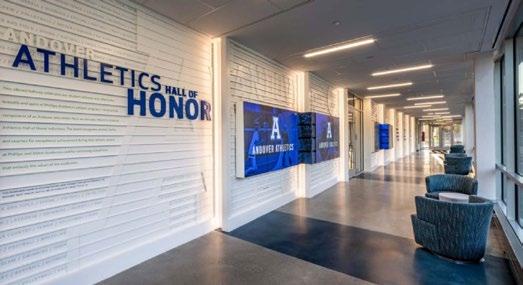

For the full case study, visit Stanmar’s website
For more information about Stanmar, email Dawson Miller, Project/Marketing Assistant
GREGG SHUPE
ROBERT BENSON
GREGG SHUPE
GREGG SHUPE
GREGG SHUPE
ROBERT BENSON

From Ice Rinks to Ski Slopes: One Athletic Trainer’s Journey into the World of Alpine Racing
by Caroline Davenport, MS, N.H. LAT, ATC |
One bad crash. Season ending. Career-ending. Every alpine skier’s nightmare. There are around 3550 FIS licensed athletes in the United States. At Holderness, there are around 36 FIS racers and 55 Eastern Alpine athletes, all needing to be in top shape to compete at this high level.
I knew absolutely nothing about ski racing when I took my job as an athletic trainer at Holderness. There was an extreme learning curve for me about the terminology, equipment, disciplines, and the determination to succeed. Basically, everything that it means to be a ski racer, I had to learn. At first, I had no idea the amount of time, effort, and money that it took to get to FIS-level skiing (I’ll be honest, I didn’t know what FIS meant until last year). HOLDERNESS
photos courtesy Caroline Davenport unless noted
Holderness School’s lane at the Copper Mountain, CO camp this spring.
The Mentor Who Lit the Path
My passion for athletic training began in 2014, my freshman year at Medfield High School in Massachusetts. I was mentored by former athletic training legend Maria Hutsick. Maria was a fiery, smart, and well-loved person. She had a truly exquisite resume: Olympic Women’s Ice Hockey athletic trainer, first female head athletic trainer at Boston University, athletic trainer at Yale University, the list goes on.
Maria will forever be the best mentor of my lifetime, because her influence spread far outside of my classroom knowledge. She had a fervent belief in her students that was contagious, and her belief in me has taken me all over the country to pursue the career I am passionate about. Maria passed in October of 2023, just one year and two months into my brand-new career as a certified athletic trainer. It was hard to find my own path without the crutch of my mentor, but luckily, I found my home quite easily at Holderness.
Prior to Holderness, I received my undergraduate education from Ithaca College, where I had clinical rotations in wrestling, volleyball, and softball. I spent my senior year working with the Cornell Women’s Ice Hockey team. I had a variety of experiences with high-level athletes, including the Division III National Championships in Wrestling in 2019, the Division III National Championships in Gymnastics in 2021, and traveling with the Cornell Women’s Hockey team to the ECAC quarterfinals in 2022.
When I began looking for graduate school opportunities, I applied for the Graduate Assistant athletic training position through Plymouth State University. It was perfect, I would be closer to my parents, I enjoy the outdoors, and most importantly, I could get back into skiing. A sport that I loved as a child, but never took seriously. When presented with the opportunity to work at Holderness, I called Maria and asked her what to do.
A Crash Course in Ski Racing
Nothing prepared me for the whirlwind that was my first year of working with snow sports at Holderness. Growing up, my sport was ice hockey. I loved hockey, but skiing was a fun activity for me when I had the opportunity to go. I never dreamed of working at a place where students actually skied for their main sport.
Davenport,
ski gear ready to head out on the slopes
Deep cuts from tuning requiring stitches, concussions with loss of consciousness (LOC), torn ACLs, tibial fractures, frostbite, GS back, and “boot bang” were among just a few of the injuries I became well-versed in during my first year at Holderness. I quickly began realizing how knowledgeable the student athletes were about their sport (and common injuries associated with it).
I asked questions. So many questions. What is slalom? How many different skis do you have? How much do the boots cost? Wait, there are two different pieces to your boot? Can I take my boot apart? Oh, my boots are different… got it. What is the difference between tuning and waxing? Oh sorry, that was a dumb question. Why do you wear those funny-looking shorts? You have two different helmets?
I felt annoying, but Maria taught me that to be a good athletic trainer, you have to understand the sport you are working with, and you especially need to understand your athletes. I developed
Caroline
AT standing in
a deep respect for the snow sports on campus, and I began to understand the passion that these student athletes have for such a unique opportunity that we provide at Holderness. None of my classmates from Ithaca have ever heard of ski racing, never mind found themselves on a mountain skiing down to an athlete who crashes and providing care on the unruly surface of snow.
A New Challenge: Copper Mountain
In the spring of 2024, Director of Snow Sports Ben Drummond asked me if I would like to spend two weeks in Colorado with the Eastern Alpine teams. I responded, “Like on the mountain?” He laughed and said, “Yes, Dav. On the mountain. As an AT.”
The next thing I know I am on a plane heading to Copper Mountain with 25 Eastern Alpine Skiers. I had yet to see ski racing up close. I had only heard about it and seen videos from the students. When I arrived at the hotel, I unpacked my AT kit, my cupping set, Graston tools, bands and stretching materials. The next morning, my alarm went off at 5 am to head over to the mountain.
I practically fell over when I picked up my first bundle of gates. I don’t know how these coaches do it for almost 150? 200? days a
A box of cupping tools for athletic training
Cupping, or myofascial decompression, is a modality used to treat soft tissue pain (musculotendinous). It is used to lift the myofascial tissue and create a negative pressure, creating an environment which promotes blood flow, increases range of motion, and can be used for tissue or scar adhesions. I like to explain it to the kids as, “when you use cupping, it’s like your tight muscles have rice krispies in them, the cups glide over the tissue and pop them, those are the adhesions in the tissue that get broken up in a sense”.
I only use it every four to five days because it’s pretty aggressive but effective. I only do active or glide cupping techniques where the athletes perform movement and work through the range of motion they are limited in with the cups on and off. First, they perform the range of motion with cups on for 10 reps, then I take them off and they do the same motion for 10 more. They can really see the increase in range immediately after. After I am done, they stretch immediately with the newly playable tissue. I try to limit the amount of ecchymosis (bruising) that occurs.
year. Don’t even get me started on the bags of salt. I learned very quickly that this was no joke.
I spent the camp working with the skiers to keep them healthy and learn how to use their bodies in ways to maintain high levels of core and glute engagement. We worked on mobility of joints, proprioception, and active therapies to maintain the high level of training required during the 14-day camp. I learned how to tape and pad bone spurs, increase dorsiflexion in the athlete’s ankles, and provide relief for the so-called “GS back”, a lower back injury.
I continue to attend the spring Copper camp, each year learning more about the sport, the athletes, the desire, and the risk. I have gained an immense amount of knowledge and appreciation for alpine skiing, and I sincerely hope that the parents, coaches, and student athletes continue to benefit from the skill set I can provide as an athletic trainer.
Caroline Davenport joined Holderness in 2022. Caroline serves as the Assistant Athletic Trainer. She earned a B.S. from Ithaca College and an M.S. from Plymouth State University. Caroline loves to rock climb, play ice hockey, and spend time with her bunny named Charlie.
Instrument Assisted Soft Tissue Mobilization tools. Caroline is Graston Technique certified.
Long-jumping for longevity: A Concord world champ’s journey
by Stephen Tobey — Correspondent, The Concord Bridge
It started when Pamela Callahan was looking for a way to treat the back issues she experienced while working 12-hour days at a desk in the finance business.
It became a way for her to stay active and fit when she retired a year ago.
And last month, it led her to a world championship.
Callahan, a 33-year resident of Concord, placed first in the long jump in the 65-69 age group at the WMA World Indoor Championships, which took place at the Alachua County Sports Center in Gainesville, Florida, from March 23 to 30.
Callahan, 65, won the event with a personal record of 3.75 meters (12 feet, 3¾ inches). She also placed fourth in the high jump, clearing 1.18 meters (3-10½).
“I was really pleased,” said Callahan, who also won the USA Track and Field’s national championship in the long jump. “Based on what I had done before, I was expecting to place, but not sure if it would have been first, second or third.”
When the student is ready … Callahan has been competing in Masters track and field for three years. She dabbled in track and field while attending St. Paul’s School in Concord, New Hampshire, and at Princeton University, but she preferred team sports such as volleyball and rugby.
After college, she ran occasionally, but years of working long hours sitting at a desk took their toll, leaving her with scoliosis and back spasms.
“A friend of mine who is a doctor said, ‘Alex could help you,’” she said.
Alex is Olexandr Ponomarenko, who owns Apex Performance, a personal training studio in Acton.
Ponomarenko is a longtime track and field coach, both in his native Ukraine and in the United States. He’s worked with several outstanding athletes from Concord-Carlisle High School, including former pole vaulter and recent CCHS Hall of Fame inductee Anna McFarlane and All-America lacrosse player Hannah Dudley, who both continued to compete at Stanford University. Ponomarenko’s daughter, Olga, was an All-American in the high jump and long jump at CCHS who won state and New England titles and competed for the University of Connecticut.
He’s also worked with several Masters track and field athletes, taking 10 to the USATF New England championships and two to the WMA World championships.
“Training Masters track and field athletes,” Ponomarenko said, “that’s my new hobby.”
The competitive itch
After training with Ponomarenko for a while, Callahan got the itch to compete in something and explored her options.
“We were talking about goals, and I thought about the marathon, and Alex thought it wouldn’t be good for my joints,” she said. “I play tennis in a league, but Alex thought I might want to try track and field.”
At first, Callahan’s main focus was the high jump.
“They’re both very technical events,” she said. “The long jump was in service of the high jump. It can build confidence.”
Training for the long jump and high jump can be challenging during the winter indoor season. They sometimes travel to Boston
Coach Olexandr Ponomarenko with Concord track and field athlete Pamela Callahan.
Photo by Stephen Tobey.
to train at the Reggie Lewis Center but have to work around the training and competition schedules of high school and college teams. Usually, they train in Ponomarenko’s storefront studio.
“We have to get creative,” Callahan said. “We don’t have the pit for the long jump or the mats and the bar for the high jump.”
During the outdoor season, they sometimes train at local tracks at Emerson Playground or Acton-Boxborough Regional High School.
AFTER TRAINING WITH PONOMARENKO FOR A WHILE, CALLAHAN GOT THE ITCH TO COMPETE IN SOMETHING AND EXPLORED HER OPTIONS.
In addition to working on the technical aspects of the events, Callahan also spends a lot of time doing jumping drills and strength training for the legs with squats and lunges.
Speed, power, endurance
Maintaining and developing the explosiveness that the jumping events require can be a challenge for older athletes.
“First, it’s the speed and the power,” Ponomarenko said. “Then the endurance.”
Said Callahan, “I listen to Andrew Huberman and Peter Attia’s podcasts. They talk a lot about anti-aging topics. Now they’re saying things that Alex has been saying for 15 years.”


When she competes at the national and world championships, Callahan sees plenty of athletes who show what is possible later in life.
“There’s one woman who is 90 years old,” Callahan said. “She started when she was 65. You see how young she looks, and she has not just strength but the mental acuity of someone 15 years younger.”
Ponomarenko also mentioned a 72-year-old athlete who runs the 60-meter hurdles.
Callahan draws inspiration from those athletes, as well as the people of Ponomarkenko’s native Ukraine, who are fighting for the survival and sovereignty of their country.
“They have the resolve that’s so inspiring,” she said.
This article first appeared on The Concord Bridge. Used with permission.
SKUNK HOLLOW
Do you need a handbook, directory or magazine? How about a postcard, invitation or stationery? Or a program brochure, fundraising appeal or search piece?
Are you overwhelmed? Do you even know where to start?
Let me help. I have over 25 years of experience with school publications and printing production, and I am accustomed to tight deadlines and equally tight budgets.
I can help you figure out what you want, pull the pieces together and deliver a final product you will be thrilled to share with parents and alumni.

The Impact of Mentors and Mentorship
by Jim Kelley
There are many ways people find their way to the athletic director’s office. For many it comes after a successful career on the sidelines. For others it comes as a set of additional responsibilities. One old joke suggests the responsibility lands with the person who reacted the slowest when the keys were thrown their way.
For me, it always felt like all roads led to athletic administration and my road was marked by mentors and colleagues who not only recognized my passion for the work but took the time to help me learn how they think about the job. Each has ingrained a part of themselves and their philosophy in my approach and I find myself constantly referencing conversations with these incredible professionals whenever I get stuck.
There From the Start:
Steve Kelley
Bancroft School Athletic Director, 1989-2016
My earliest memories place me on the fields and gyms of Bancroft School, following my dad around while he coached, taught, and stewarded the athletic program for nearly 30 years. Late nights, weekends, games, practices, summers I got to see it all, and then I got to be a part of it as a student athlete.
It isn’t all that fun being the AD’s son. Every minute I earned was questioned. Every game or practice that was cancelled was his fault. Every year we didn’t get new uniforms was him being cheap.
Above: the Kelley family. Below: Steve Kelley at Bancroft
But what I learned from my dad and from Bancroft is that we can only do the best we can with what we have and what we had were incredible coaches and dedicated athletes, routinely pushing larger schools with greater resources further than they could have expected. With less than 100 boys in grades 9–12 we had no business fielding full teams in cross country, golf, soccer, basketball, skiing, crew, track, lacrosse, baseball, and tennis, let alone teams that could win league and NEPSAC Championships.
The competitive success we were able to achieve, and the memories that so many of us made came down, plain and simple, to the people on the bus.
A Foot in the Door:
Jim McNally
The Rivers School Athletic Director 1996-2016
Everyone needs a shot. For me, my shot came at Rivers just months after graduating from Springfield College with my degree in communications. With Jim’s support I was able to secure an interview, and with my foot firmly through the door I was able to take my first step in a rewarding career in education.
Jim was non-stop. He was relentless in his pursuit of ensuring every student-athlete at Rivers was having a high-quality experience. What I learned from Jim more than anything else was the importance of protecting that experience and doing so in ways that aligned with the mission of the program.
Rivers’ campus-wide philosophy of “Excellence with Humanity” extended to the playing fields and gyms and he made sure
that by communicating to all of his coaches the duty we had to protect not just the quality of experience for our students, but for our opponents as well. He doubled down on that by stating the ultimate goal or “Daily Double” as he would say was to win the league and the sportsmanship award, a distinction multiple teams earned over the years.
I carried that same mantra to my first athletic director role, and was pleased when it bore fruit with an MIAA State Sportsmanship Award in girls’ lacrosse and two “Daily Doubles” from my gymnastics squad. I would have loved to share those success stories with him, I like to think it would make him very happy.
A Consistent Confidante: Bob Pipe
Athletic Director The Rivers School (2016-2020) & St. George’s School (2020-Present)
My first day of work at Rivers coincided with the first day of fall preseason. My boss had me grab a camera and document the first days of practice as teams began preparation for the school year. My first stop was the boys’ soccer field, where among 50 or so boys winding down their early morning session was their coach commanding things with precision that only comes with decades of experience.
Pipe, The Rivers School and St. George’s School
Jim McNally, The Rivers School
Bob
Bob Pipe was the associate athletic director and coach for boys’ soccer and girls’ basketball at the time. I walked over, introduced myself, heard one of his jokes and began a friendship that has persisted for the last 12 years. Bob would soon move into the athletic director role and I would find myself in his office constantly picking his brain and listening to him and his staff work through elements of the athletic program.
Pipe is known to always be on his phone, talking to some old friend or former student athlete about any manner of things. One senior in their speech remarked he hoped to one day be on the other end of those phone calls. I count myself fortunate to know that whenever I get stuck, Bob is one quick call away to talk through a problem.
I learned from Pipe that you’ll never know so much that you don’t need someone to help you clear a challenge.
Finishing School: Bobbie Crump-Burbank
Athletic Director Brooks School (2015-2023)
By the time I arrived at Brooks School in the winter of 2017 I had worked with, for, and alongside so many incredible administrators and coaches but only as a coach, intern, or colleague. With Bobbie, and in my role as an assistant director of athletics, my learning and practical experience was super-charged.
Bobbie had been at Brooks for a long time prior to taking over the AD position just two years before my arrival. Her pedigree as a Hall of Fame coach and teacher preceded her, but her super power was organization and systems. With Bobbie, everything had its place and it was important that everyone knew that place.
There’s an old saying about buses and sudden absences that we used to use, but it’s perhaps better to say that Bobbie believed if she ever won the lottery and one of us needed to fill her role that the systems should be in place to keep the operation running for the student athletes. And so we cross trained on scheduling officials, transportation, and buses; on washing uniforms and practice gear and storing equipment; on scoreboard operation, crowd control, and social media.
Thanks to Bobbie I learned how to leave a place better than I found it and to train my team to survive a day where I had a sick child, a veterinarian appointment, or a family obligation. In step I believe I had put the cap on my administrative training, and was ready for the challenges I would face over the next few years.
The power and role of mentorship is something we talk about a lot in athletics. It is equally important to learn from those who came before you as it is to share your experience with the next group of leaders who will set the course for student athletes for years to come.
I have never taken for granted the opportunity to sit across from these people, or from any of the coaches and administrators I crossed paths with at Rivers, Brooks, NEPSAC, the MIAA, and more recently at Springfield College. The countless texts, emails, phone calls, recommendation letters, and sideline conversations that have helped me develop my skillset as a student-centered and effective administrator, which is to say nothing of the impact each of these people have had on me as a person, father, husband, and friend.
A former head of school for whom I worked once said “Gratitude unexpressed isn’t truly gratitude at all.” So to those who have shaped me, thank you for your generosity, belief, and commitment to the work you do and have done for the student athletes of NEPSAC.
Jim Kelley is a 2009 alumnus of Bancroft School and former faculty and staff member at The Rivers School and Brooks School. Jim is currently the director of athletic operations at Springfield College in Springfield, MA.
Brooks School Girls Soccer Takes on London with GoPlay
The Brooks School team embarked on an enriching London adventure, blending cultural discovery with football immersion. Highlights included exploring iconic city sights, sampling local cuisine, witnessing the Changing of the Guard, and enjoying panoramic views from the London Eye.
Their football experience featured a Chelsea FC stadium tour, a live Premier League match, intensive training with UEFA coaches, and competitive games against Real Bedford Town and professional club Watford FC. And not only did they compete against the English opposition they managed to earn victories in both games and with it make a lot of new friends along the way.
The team was based out of the Park Plaza London Riverbank, which offered an ideal balance of comfort, stylish design, and exceptional service. Renowned for its prime riverside location, the hotel provided easy access to London’s cultural and tourist treasures. The London Eye, the Houses of Parliament, and the Southbank Centre were just a stroll away.
Tanis, GoPlay’s tour representative, commented: “What a tour! The ladies from Brooks threw themselves into English football from walking the legendary stadium tunnels to chanting with the crowds on match day! We kicked off with stadium tours and training sessions at some of the country’s most iconic grounds. But these girls didn’t just watch football they played it and won two matches against local teams!
“They even found time to catch some sights like the Tower of London and The Eye as well as supporting the local economy in Covent Garden and high street Ken! They came curious and left as true football fans and teammates with memories to last a lifetime.”
Trip Highlights
Cultural Experiences
» Witnessed the renowned Changing of the Guard ceremony, a quintessential British tradition.
» Strolled through Borough Market, sampling artisanal treats and soaking up the lively atmosphere of one of London’s oldest and most renowned food markets.
» Visited a traditional English pub, enjoying a taste of local cuisine and atmosphere.
» Explored London on a guided walking tour, taking in the iconic sights and sounds of the bustling metropolis.
» Took a ride on the famous London Eye, experiencing breathtaking panoramic views of the city skyline.
Football Activities
» Played two competitive matches against Real Bedford Town and Watford FC, Team Gatherings.
» Enjoyed a post-game social, meeting and talking to players, officials and parents of the opposition.
» Participated in a tour of the Chelsea FC Stadium, gaining insight into the history and legacy of one of England’s top football clubs.
» Attended a thrilling Premier League match, watching West Ham play against Chelsea at the London Stadium.
» Engaged in two intensive training sessions led by UEFA A Licensed coaches, focusing on technical skills and teamwork.
» Enjoyed several team lunches, strengthening bonds and sharing memorable moments.
» Celebrated the conclusion of their London adventure with a special farewell dinner.
Learning to Fail: How Sport Develops Strength Through Struggle
Failure is an inevitable, healthy, and normal part of life—and a great way to “practice” failure is though youth sport. Being able to embrace failure and grow from it are skills, and testing those skills in low-stakes situations can have big payoffs later in life.
Here, Dr. Aaron Dinin, who teaches an entrepreneurship class at Duke University called Learning to Fail, and TrueSport Expert Kevin Chapman, PhD, clinical psychologist and founder of The Kentucky Center for Anxiety and Related Disorders, explain the benefits of failure and how you can use failure as your team’s secret super power.
Why is failure important?
“Failure is the universe’s most honest feedback loop” says Dinin. “It tells us—without sugarcoating or grade inflation—where the edge of our current ability lives.” He explains that in order to progress, we need to fail.
“It is 100 percent a good thing to lean into failure,” says Chapman. “People who have a high standard for themselves understand that failure is part of the journey towards growth and success. On the other hand, people who are perfectionistic view failure as unacceptable, which is actually very limiting. When you view failure as just another part of the process, then significant learning can occur as a result. You fix it and then move forward.”
Dinin explains that there are a few key benefits of learning to fail. Failure, especially in low-stress situations, teaches valuable life skills. “Figuring out why you missed the goal in soccer on Monday looks a lot like debugging a business pitch on Thursday,” he says. A student-athlete who can fail and learn from it on the field is more likely to be able to handle the stress of a final exam or term paper.
But it’s also an important skill when it comes to developing resilience. “Repeated microfailures build a psychological callus,” he says. “It makes the mind more flexible—and eventually ready for bigger loads.” Dinin adds that getting comfortable with failure can also boost mental well-being: If failure doesn’t feel like the end of the world, anxiety levels stay lower.
Why youth sport should be a safe environment for failure
Sport in general is a great place to learn about failure in a low-risk way. Miss a basket? You can try again a minute later, or in the next game. The stakes are low compared to most other parts of life, so it’s a great chance for a young athlete to develop the skill of failing and bouncing back from that failure.
Sport also allows for clear cut failure and feedback in a way that much of life doesn’t. “A basketball rim never lies, and a stopwatch has no feelings,” says Dinin. “In sport, the rules are clear, the consequences are contained, and tomorrow’s practice always shows up. That built-in reset button means athletes can run experiments on themselves—miss the shot, tweak the form, shoot again—without existential fallout.”
Unfortunately, there are some team cultures in youth sport where failure isn’t seen as a good thing. Whether you’re an athlete, coach or caregiver, you may find that you fall into what Dinin refers to as a “sky is falling” mentality, where one setback or one loss feels like the whole world is ending.
A lot of people also expect to win—and then keep winning. “Expecting a 100 percent success rate is unrealistic, but people want it,” he says. “But remember, nobody wins every game or the championship every year. If they did, the sport wouldn’t be enjoyable.”
Dinin also notes that some teams develop a ‘win-at-all-cost mentality,’ where every mistake is treated as a character flaw. And other teams are over-coached, which Dinin notes can “turn athletes into remote-controlled drones instead of decision-makers.” These environments do more harm than good when it comes to developing healthy athletes and people who are set up for success on and off the field.
Scrolling on social media can also make it seem as though everyone around them is succeeding, which can make failure even more stressful. “Social media often only shows an athlete’s highlight reel,” says Dinin. “Athletes fail in silence, succeed on camera—but that buries the messy middle where mastery grows.”
How to effectively use sport as a testing ground
Youth sport is a great chance for athletes to learn to fail, but in order to do so, coaches, caregivers, and athletes need to appreciate failure’s value.
“Caregivers need to be self-aware and acknowledge how their own fear of failure can be transmitted from parent to child,” says Chapman. “It’s transmitted in two ways: modeling and information transmission. So, it could be showing your athlete that failure makes you anxious or afraid, or it could be speaking about failure in a way that shows failure is a bad thing in your own life. The most important thing a caregiver can do is become self-aware of how their distress and negative feelings are transmitted to their child.”
For coaches, Chapman notes that reinforcement is always going to be a more powerful tool for behavioral change than punishment. “Reinforcement is meant to increase a behavior, while punishment is meant to decrease a behavior,” he says. “People respond more effectively to being told what to do versus what not to do. When you speak to an athlete, focus on what they did well before giving corrective feedback.”
For both coaches and caregivers, Chapman recommends ensuring that your language separates identity from performance. “Athletes tend to hear that they are a ‘bad performer’ when they make a mistake, instead of hearing that it was a ‘bad performance’ and that is absolutely the wrong message,” he says. “Athletes need to understand that yes, we will all have bad performances at some point, but we have the ability to change the actions and behaviors that lead to those performances. We aren’t failures, we just have failed in certain situations.”
For athletes, learning to separate performance from identity is a critical skill to develop. “Adopting phrases or mantras like ‘progress, not perfection’ or ‘failure is part of the process’ can be helpful,” he says. “I also want athletes to get in the habit of asking ‘What did I learn today?’ after every game or practice, since thinking about failures in the context of lessons learned can help
About TrueSport
shift them from negatives to positives. That’s the most powerful question any athlete at any level can ask themselves, so that they can always have a process mentality.”
Below, Dinin offers some additional prompts and activities for coaches, parents, and athletes to help them embrace and learn from failure:
For coaches:
• Run “mistake drills.” Schedule reps that require experimentation—athletes can’t pass unless they first try something new.
• Narrate your own mistakes. Let players hear you say, “I guessed wrong on that strategy—here’s what I learned.”
• Score creativity, not just outcomes. A daring attempt earns points in practice, even if it clanks off the rim.
For parents:
• Replace “Did you win?” with “What did you discover?” in the post-game car ride.
• Celebrate visible effort: muddy jerseys, red faces, worn laces—symptoms of productive risk.
• Model and embrace non-catastrophic failure at home: burn a pancake, laugh, make another.
For athletes:
• Keep a failure log—one line per practice about what went wrong and the tweak you’ll test next.
• Pair up with a “failure buddy” who swaps honest debriefs instead of polite thumbs-ups.
• Build a pre-game mantra that focuses on learning, rather than winning. For example, “Today, I collect data.” This simple reframe turns pressure into curiosity.
Can failure go too far?
While failure is an important facet of youth sport and development, there is a point where failure can cease to be positive or beneficial. “If every rep produces the same error with no adjustment,
TrueSport®, a movement powered by the experience and values of the U.S. Anti-Doping Agency, champions the positive values and life lessons learned through youth sport. TrueSport inspires athletes, coaches, parents, and administrators to change the culture of youth sport through active engagement and thoughtful curriculum based on cornerstone lessons of sportsmanship, characterbuilding, and clean and healthy performance, while also creating leaders across communities through sport.
For more expert-driven articles and materials, visit TrueSport’s comprehensive library of resources
This content was reproduced in partnership with TrueSport. Any content copied or reproduced without TrueSport and the U.S. Anti-Doping Agency’s express written permission would be in violation of our copyright, and subject to legal recourse. To learn more or request permission to reproduce content, click here.
you’re not failing, you’re rehearsing frustration,” says Dinin. “Healthy failure lives in the zone where each miss sparks a new hypothesis; beyond that, it’s time to shrink the difficulty or seek new coaching so the learning loop re-opens.”
Chapman agrees, noting that panic attacks, dropping grades, or other dramatic behavior changes can be signs that it’s time to move on or make significant adjustments.
Takeaway
Learning to fail is an extremely valuable skill in sport and in life, and youth sport is a great place to develop that skill in a low-risk way.
Remember to tag #nepsac in your social media posts!
